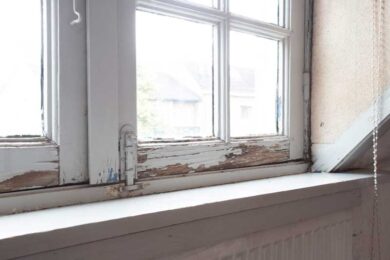DOH & HPD Lead Violation Removal NYC-- Specialist Solutions for Compliance
DOH & HPD Lead Violation Removal NYC-- Specialist Solutions for Compliance
Blog Article
Comprehensive Overview on Effective Lead Offense Removal Techniques
In the realm of ecological security, addressing lead violations requires a careful and organized strategy. This comprehensive guide begins by highlighting the crucial preliminary steps of determining lead hazards through advanced assessment and testing methods. Techniques such as XRF analysis and dust clean sampling are important in identifying contamination resources. The overview clarifies on the importance of adhering to rigorous safety and security methods throughout the removal process, consisting of the usage of appropriate PPE and isolating influenced locations. The subsequent sections assure to review post-removal confirmation and precautionary techniques, ensuring lasting security and compliance. Discover the intricate information that make these strategies not simply effective yet crucial.
Identifying Lead Threats
Identifying lead risks is a critical very first step in alleviating the threats linked with lead direct exposure. Lead, a toxic steel, can be present in different ecological mediums, including paint, soil, water, and dust.
The preliminary phase in determining lead dangers includes recognizing usual lead resources within the developed atmosphere. Frameworks developed prior to 1978 are especially prone as a result of the common usage of lead-based paint during that period. Additionally, soil contamination can occur from weakening exterior paint, industrial emissions, or historic use leaded gas.
One more significant source is lead piping and pipes components, which can leach introduce drinking water. Customer items such as playthings, ceramics, and imported products might likewise consist of dangerous lead levels. Notably, occupational settings and pastimes involving lead can track impurities right into homes.
Assessment and Testing
When addressing lead dangers, effective evaluation and screening are extremely important. Preliminary assessment normally involves a visual examination to determine possible lead sources, such as degrading paint or contaminated dirt.

Dirt clean tasting is another vital strategy, especially in household settings. By collecting samples from floorings, windowsills, and various other surface areas, this method provides insights right into possible exposure risks. Dirt screening around structure boundaries is crucial to detect lead contamination that might present dangers, particularly to kids.
Safe Elimination Treatments
Upon finishing complete analysis and screening, applying secure elimination treatments is the following important phase in attending to lead risks. This process guarantees that lead-contaminated materials are properly and securely removed, lessening danger to both workers and residents. The initial step includes isolating the affected area using plastic bed linen and correct sealing techniques to stop the spread of lead dirt.
Workers must wear ideal individual protective equipment (PPE), including respirators, handwear covers, and non reusable coveralls, to alleviate exposure. Using specialized click to find out more devices and wet approaches, such as damp fining sand or using HEPA-filtered vacuums, minimizes the diffusion of lead bits. It is important to stay clear of completely dry sanding or abrasive blasting, as these techniques can produce hazardous lead dust.
Garbage disposal is an additional crucial component; all contaminated products need to be safely bagged and classified according Check This Out to EPA and regional laws. Furthermore, detailed cleaning of the job area with HEPA vacuum cleaners and damp cleaning guarantees the elimination of residual lead bits.
Post-Removal Verification

Verification of effective lead elimination, recognized as post-removal confirmation, is important to make sure the security and habitability of the remediated location. This assessment makes certain that all recognized resources of lead have been attended to and that no noticeable indications of contamination stay.
Complying with the visual evaluation, environmental sampling is carried out. This includes gathering dust, soil, and sometimes website here water examples from the remediated location. Recognized labs examine these samples to measure lead levels, guaranteeing they drop listed below the security thresholds developed by regulative bodies such as the Environmental Security Company (EPA)
Furthermore, air quality testing might be executed to find airborne lead particles, specifically in instances where considerable lead-based paint elimination or improvement has occurred. The outcomes of these tests provide measurable information confirming that the lead levels are within permitted restrictions.
Eventually, post-removal verification offers as an essential checkpoint, verifying the effectiveness of the lead reduction efforts and guarding the health and wellness of owners and visitors.
Preventive Procedures and Maintenance

A vital safety net includes making use of lead-safe licensed professionals for any improvement, repair work, or paint activities. These experts are learnt practices that decrease lead dust and debris. Furthermore, keeping painted surface areas to stay clear of cracking or peeling off is essential, as weakening paint can launch lead fragments into the atmosphere.
Educational campaigns targeting homeowner and renters relating to the threats of lead and the relevance of reporting any prospective dangers can better improve preventative initiatives. Routine cleaning using HEPA vacuums and wet wiping strategies can dramatically reduce lead dust buildup.
Verdict
In summary, effective lead violation removal necessitates a careful technique incorporating thorough assessment, precise screening, and rigid elimination treatments. Ensuring security through proper isolation and personal protective devices remains critical. Post-removal confirmation via ecological tasting and air top quality screening validates conformity with well-known safety requirements. Ongoing inspections and upkeep are necessary to alleviate future lead risks, thereby guarding public health and wellness and guaranteeing continual compliance with regulatory needs.
Report this page